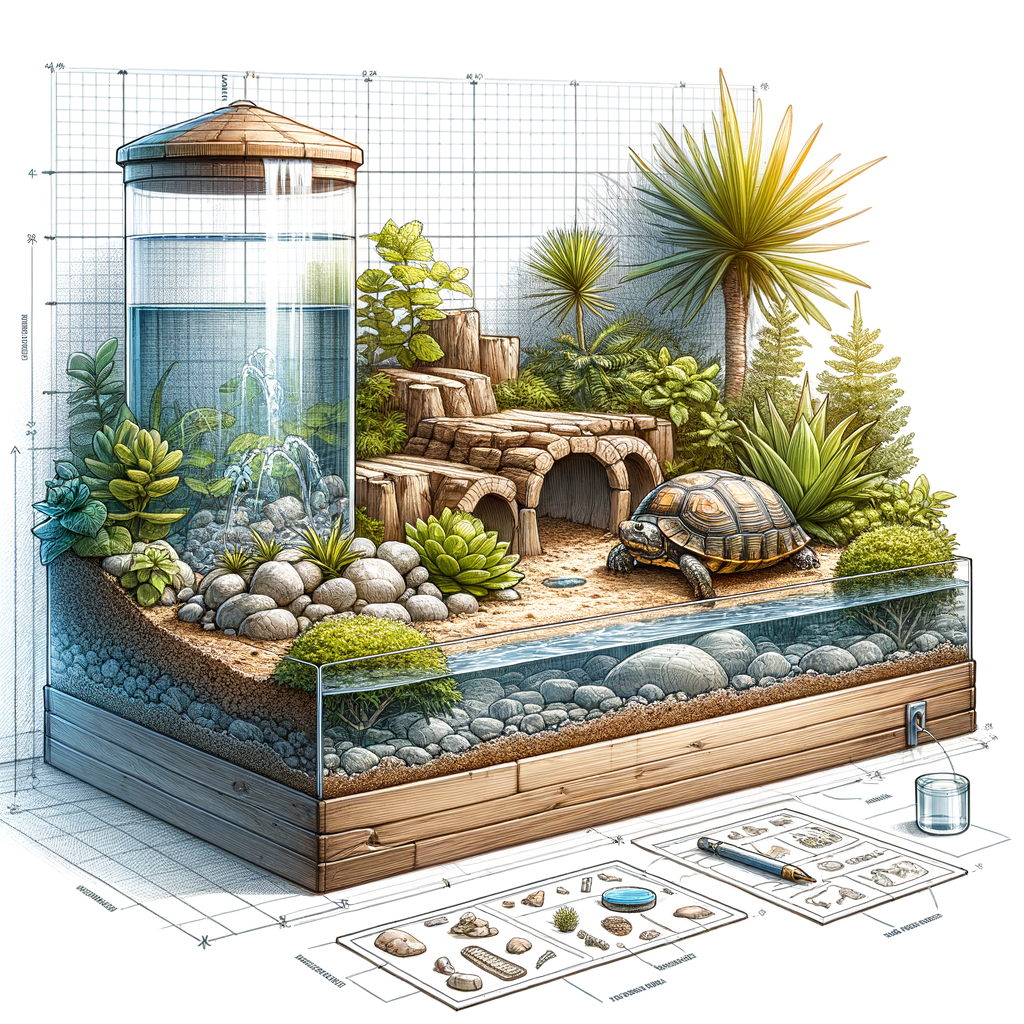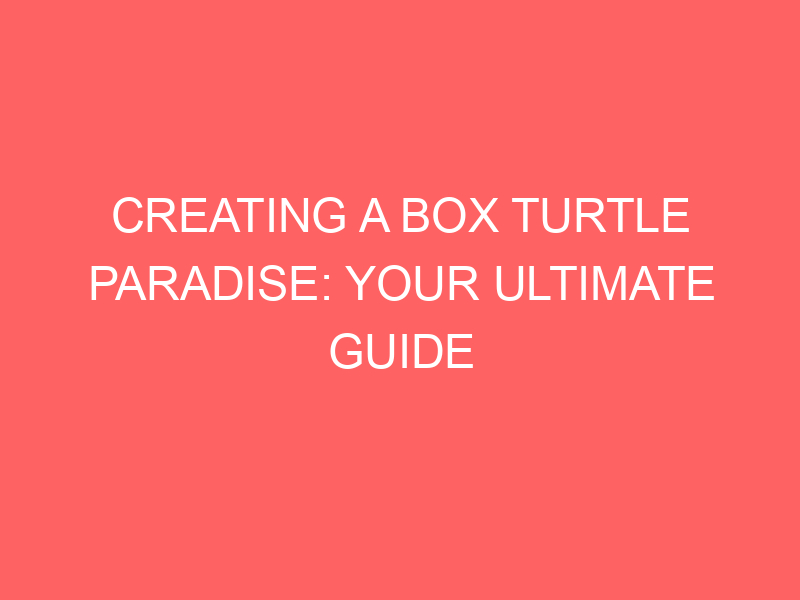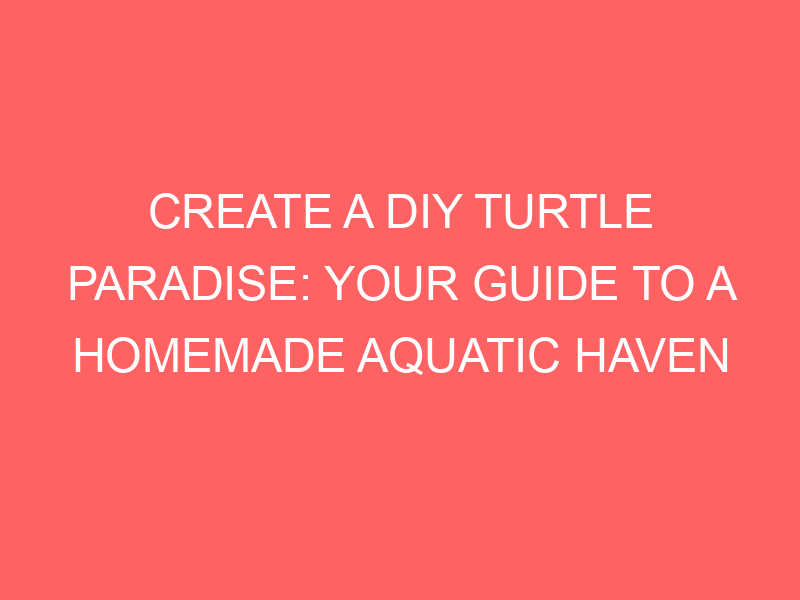
Introduction to Box Turtles
Box turtles are fascinating creatures that have captured the hearts of many pet enthusiasts. They are known for their distinctive domed shell, which resembles a box and gives them their name. In this article, we will explore the nature of box turtles and why they make excellent pets.
- Understanding the nature of Box Turtles
- Why Box Turtles make great pets
Box turtles are a type of land turtle that are native to North America. They are unique in the turtle world because of their hinged shell, which allows them to completely close their shell for protection. Box turtles are generally slow movers and have a lifespan of up to 50 years in the wild, making them one of the longest living turtles. They are omnivores, eating a variety of foods including insects, fruits, and vegetables.
Box turtles make great pets for several reasons. Firstly, their unique appearance and behavior can be fascinating to observe. Secondly, they are relatively low maintenance compared to other pets. They require a suitable habitat, a balanced diet, and regular check-ups, but do not require daily walks or grooming. Lastly, box turtles can form a bond with their owners, recognizing them and even showing signs of affection. This makes them not just pets, but companions.
In the following sections, we will delve deeper into the habitat essentials, care guide, and how to create the ideal environment for box turtles. By the end of this article, you will be well-equipped with the knowledge to provide the best care for your box turtle pet.
Box Turtles Habitat Essentials
Box turtles are fascinating creatures that require a specific environment to thrive. Understanding their habitat needs is crucial for their well-being. Let’s delve into the essentials of a box turtle’s habitat.
Understanding the Perfect Habitat for Box Turtles
Creating the perfect habitat for box turtles involves understanding their needs and replicating their natural environment as closely as possible. This includes providing the right temperature, humidity, lighting, and substrate. Here are some key aspects to consider:
- Importance of a well-designed habitat
- Key elements of a Box Turtles habitat
- Space: Box turtles need plenty of room to move around. A small, cramped habitat can lead to stress and health problems.
- Temperature: Box turtles require a temperature gradient, with a warm basking area at one end and a cooler area at the other.
- Humidity: Box turtles need a humid environment to stay hydrated and healthy. This can be achieved by misting the habitat regularly and providing a water dish.
- Lighting: Box turtles need access to UVB light, which helps them synthesize vitamin D3 and absorb calcium.
- Substrate: The substrate should be a mix of soil and sand, which allows the turtle to dig and burrow.
A well-designed habitat is essential for a box turtle’s health and happiness. It provides the turtle with a safe and comfortable space to live, eat, sleep, and play. A poorly designed habitat can lead to stress, illness, and a shortened lifespan for the turtle. Therefore, it’s crucial to invest time and effort in creating a habitat that meets all the needs of your box turtle.
There are several key elements to consider when designing a box turtle’s habitat:
In conclusion, understanding and providing the perfect habitat for box turtles is crucial for their well-being. By considering these key elements, you can create a habitat that your box turtle will love and thrive in.
Creating Box Turtles Habitat
Creating a suitable habitat for your box turtle is a crucial step in ensuring their health and happiness. Here are some steps you can follow:
- Choosing the Right Location
- Selecting the Appropriate Size
- Setting Up the Habitat
Box turtles are known for their love of both land and water. They need a habitat that provides them with access to both. A location with a balance of dry land and a shallow water area would be ideal. Remember, the location should also be safe from predators and extreme weather conditions.
The size of the habitat matters a lot. A small, cramped space can stress your turtle and lead to health issues. On the other hand, a habitat that’s too large can make it hard for your turtle to find food and water. As a rule of thumb, the habitat should be at least four times the length of the turtle and twice as wide.
Once you’ve chosen the right location and size, it’s time to set up the habitat. Start by adding a substrate, like soil or sand, for the land area. Next, create a shallow water area using a shallow dish or a specially designed turtle pool. Add some hiding spots like rocks or logs for your turtle to retreat to. Finally, ensure the habitat has a heat source and a UV light to mimic the sun’s rays.
Remember, creating the perfect habitat for your box turtle requires time and effort. But seeing your turtle thrive in an environment you’ve created is worth every bit of it.
Box Turtles Habitat Setup
Setting up a box turtle’s habitat is a crucial step in ensuring their health and happiness. This process involves selecting the right equipment, setting up the heating and lighting, and providing the right substrate. Let’s dive into each of these steps.
- Essential Equipment for the Habitat
- Setting Up the Heating and Lighting
- Providing the Right Substrate
Firstly, you will need a large, sturdy enclosure. This could be a tank or a terrarium, but it should be at least 3 times as long as your turtle and twice as wide. A water dish for your turtle to drink from and bathe in is also essential. Other equipment includes hiding spots, climbing structures, and a basking area. Remember, the goal is to mimic the turtle’s natural habitat as closely as possible.
Box turtles are ectothermic, meaning they rely on their environment to regulate their body temperature. Therefore, it’s important to provide a heat source in their habitat. A basking lamp is a great option for this. The temperature should range from 75 to 85 degrees Fahrenheit. Additionally, box turtles need UVB light to synthesize vitamin D3, which is crucial for their health. A UVB lamp should be set up in the enclosure, ensuring your turtle gets the light it needs.
The substrate is the material that lines the bottom of the enclosure. It plays a key role in maintaining the right humidity levels and providing a comfortable environment for your turtle. A mixture of soil and coconut fiber is a good choice for box turtles. It should be deep enough for your turtle to burrow into, and it should be kept slightly damp but not wet.
In conclusion, setting up a box turtle’s habitat requires careful consideration and the right equipment. By following these steps, you can create a comfortable and healthy environment for your box turtle.
Box Turtles Care Guide
One of the most important aspects of caring for your box turtle is understanding their dietary needs and feeding habits. This guide will provide you with the essential information you need to ensure your box turtle is well-fed and healthy.
Feeding Your Box Turtles
Feeding your box turtle properly is crucial for their health and longevity. It’s not just about what you feed them, but also when and how much. Let’s delve into these aspects:
-
Understanding the dietary needs of Box Turtles
Box turtles are omnivores, meaning they eat both plants and meat. Their diet in the wild consists of a variety of foods including insects, worms, berries, and even small fish. In captivity, you can feed them a balanced diet of vegetables, fruits, and protein sources like mealworms or cooked chicken. It’s important to provide a variety of foods to ensure they get all the nutrients they need.
-
Feeding schedule and portion sizes
Box turtles don’t eat every day like we do. A feeding schedule of every other day is usually sufficient. As for portion sizes, a good rule of thumb is to feed them an amount of food that’s about the size of their head. Overfeeding can lead to health problems, so it’s important to monitor their weight and adjust portion sizes as needed.
Remember, every box turtle is unique and may have different dietary preferences and needs. Always observe your turtle’s behavior and consult with a vet if you notice any changes in their eating habits or overall health.
Box Turtles Habitat Maintenance
Keeping a box turtle’s habitat clean and updated is crucial for their health and happiness. Let’s dive into two essential parts of habitat maintenance: cleaning the habitat and regular checks and updates.
- Cleaning the Habitat
- Regular Checks and Updates
Just like your home, a box turtle’s habitat needs regular cleaning to stay healthy and comfortable. It’s important to remove any waste or uneaten food daily. This helps prevent the growth of bacteria that could make your turtle sick.
Every week, you should do a more thorough cleaning. This includes washing the water and food dishes with warm, soapy water. Also, replace the substrate or bedding as needed. Remember, a clean habitat is a happy habitat for your box turtle!
Regularly checking your turtle’s habitat is just as important as cleaning it. This means looking for any changes in the environment that could harm your turtle. For example, check for sharp edges on decorations that could injure your turtle, or signs of mold or pests.
Updates are also important. This could mean adding new hiding spots or climbing areas, or changing the layout to keep your turtle stimulated. Remember, variety is the spice of life for box turtles too!
By following these steps, you can ensure your box turtle’s habitat is clean, safe, and stimulating. This will help your turtle live a long, happy life.
| Task | Frequency |
|---|---|
| Remove waste or uneaten food | Daily |
| Wash water and food dishes | Weekly |
| Replace substrate or bedding | As needed |
| Check for harmful changes | Regularly |
| Update habitat layout or features | As needed |
Creating the Ideal Environment for Box Turtles
When it comes to caring for box turtles, creating the right environment is crucial. This includes maintaining the correct temperature and humidity levels. Let’s dive into these aspects in more detail.
Temperature and Humidity
Box turtles thrive in environments that mimic their natural habitats. This means maintaining the right temperature and ensuring adequate humidity. These two factors are critical for their health and well-being.
- Maintaining the right temperature
- Ensuring adequate humidity
Box turtles are ectothermic creatures, meaning they rely on their environment to regulate their body temperature. The ideal temperature for a box turtle’s habitat ranges from 70 to 85 degrees Fahrenheit during the day. At night, it can drop to about 60 to 70 degrees. It’s essential to monitor the temperature regularly and adjust as necessary to keep your turtle comfortable and healthy.
Humidity is another crucial factor in a box turtle’s habitat. Box turtles need a humidity level of around 60% to 80%. This helps keep their skin and shells healthy and prevents dehydration. You can maintain this level of humidity by misting the habitat with water daily or using a humidifier. Remember to check the humidity levels regularly with a hygrometer to ensure they are within the ideal range.
In conclusion, creating the ideal environment for box turtles involves careful attention to temperature and humidity. By maintaining these conditions, you can ensure your box turtle thrives and lives a long, healthy life.
Providing Enrichment
Creating the ideal environment for your box turtle involves more than just maintaining the right temperature and humidity. It’s also about providing enrichment. This means adding elements to their habitat that stimulate their minds and encourage natural behaviors. Let’s explore two key ways to provide enrichment for your box turtle.
- Adding Plants and Decorations
- Providing Toys and Activities
Plants and decorations are not just for aesthetics, they play a crucial role in the well-being of your box turtle. They provide shade, hiding spots, and even food for your pet. Native plants, like ferns and mosses, can be a great choice as they mimic the turtle’s natural habitat. Decorations such as logs and rocks can also add variety to the environment and provide opportunities for climbing and exploring.
Box turtles are curious creatures and enjoy toys and activities. Simple things like a ball, a mirror, or a maze made from rocks can keep them entertained. You can also provide activities such as “hunting” for food. Hide their favorite treats around the habitat and let them search for it. This not only keeps them active but also stimulates their natural foraging behaviors.
In conclusion, providing enrichment for your box turtle is a crucial part of their care. It keeps them mentally stimulated and encourages natural behaviors, contributing to their overall health and happiness.
Conclusion: Your Complete Guide to Box Turtles Habitat
In this guide, we’ve explored the fascinating world of box turtles and their habitats. We’ve learned about the essentials of their habitat, how to care for them, and how to create the ideal environment for them to thrive. Now, let’s recap the key points and share some final thoughts on creating a box turtle paradise.
- Recap of key points
- Final thoughts on creating a Box Turtles paradise
Box turtles are unique creatures that require a specific environment to thrive. They need a habitat that mimics their natural environment, with plenty of hiding spots, a water source, and a balanced diet. Their health and longevity depend on the quality of their habitat and the care they receive.
Creating the ideal environment for box turtles involves providing them with a spacious enclosure, maintaining the right temperature and humidity levels, and ensuring they have access to sunlight or UVB light. Regular cleaning and monitoring of their habitat are also crucial to prevent diseases and ensure their well-being.
Creating a box turtle paradise takes time, effort, and a deep understanding of these creatures and their needs. But the reward of seeing your box turtle thrive in an environment you’ve created is well worth the effort. Remember, a happy and healthy box turtle is a sign of a well-maintained habitat.
As we conclude, remember that each box turtle is unique and may have specific needs. Always observe your turtle’s behavior and adjust their habitat as needed. With patience, love, and proper care, you can create a perfect paradise for your box turtle to enjoy.
Thank you for joining us on this journey to understand and create the ideal habitat for box turtles. We hope this guide has been informative and helpful. Here’s to creating the best possible home for your box turtle!














